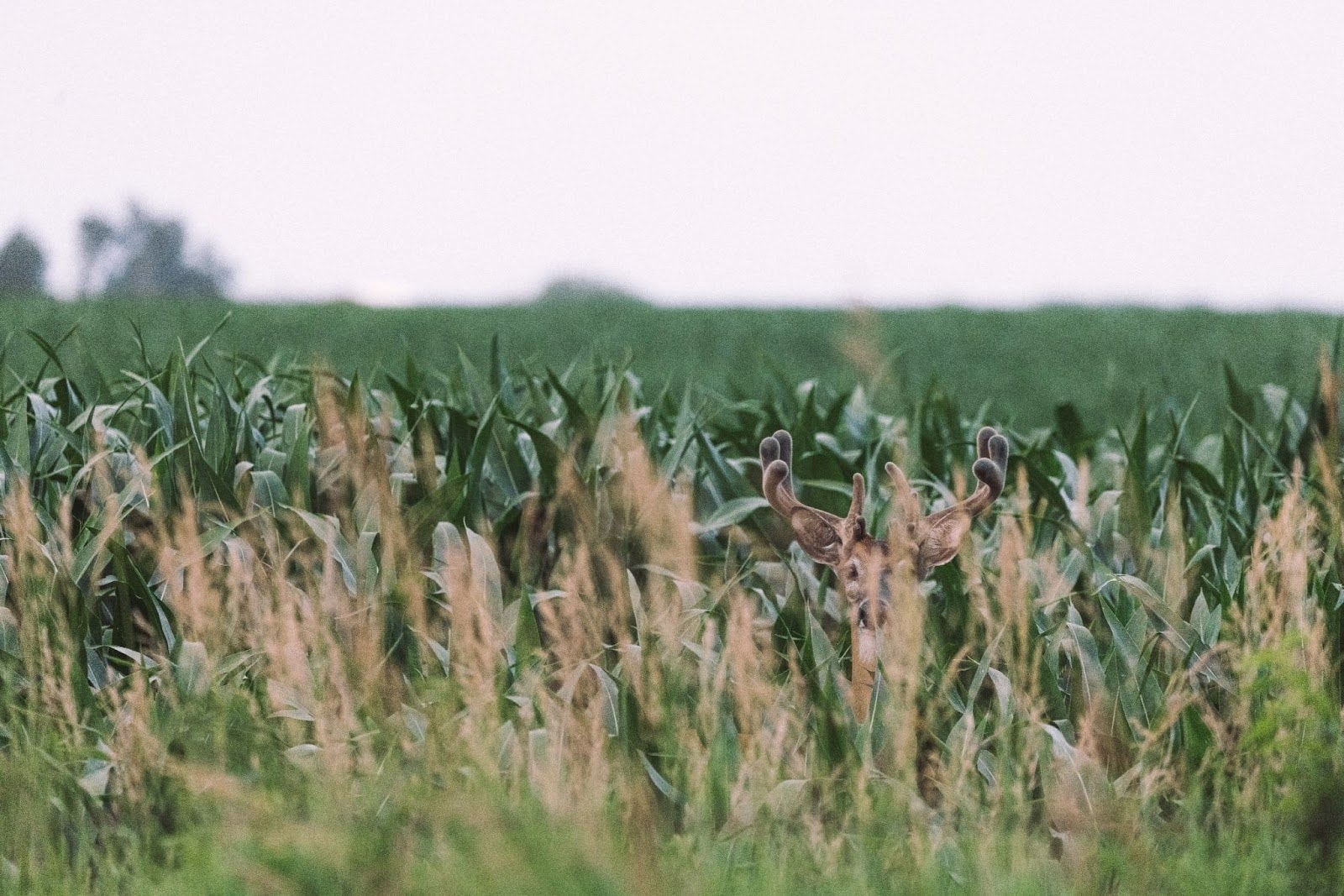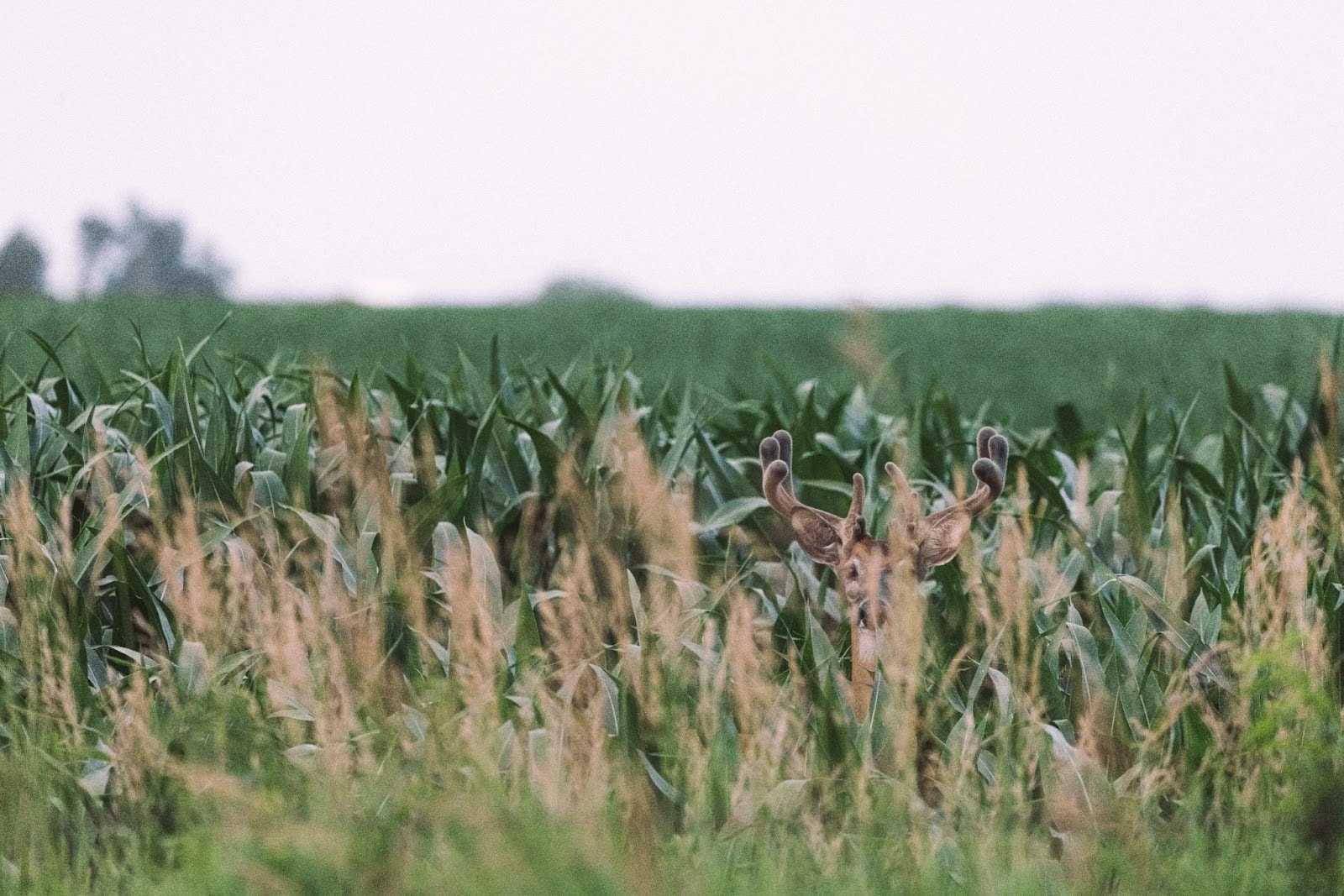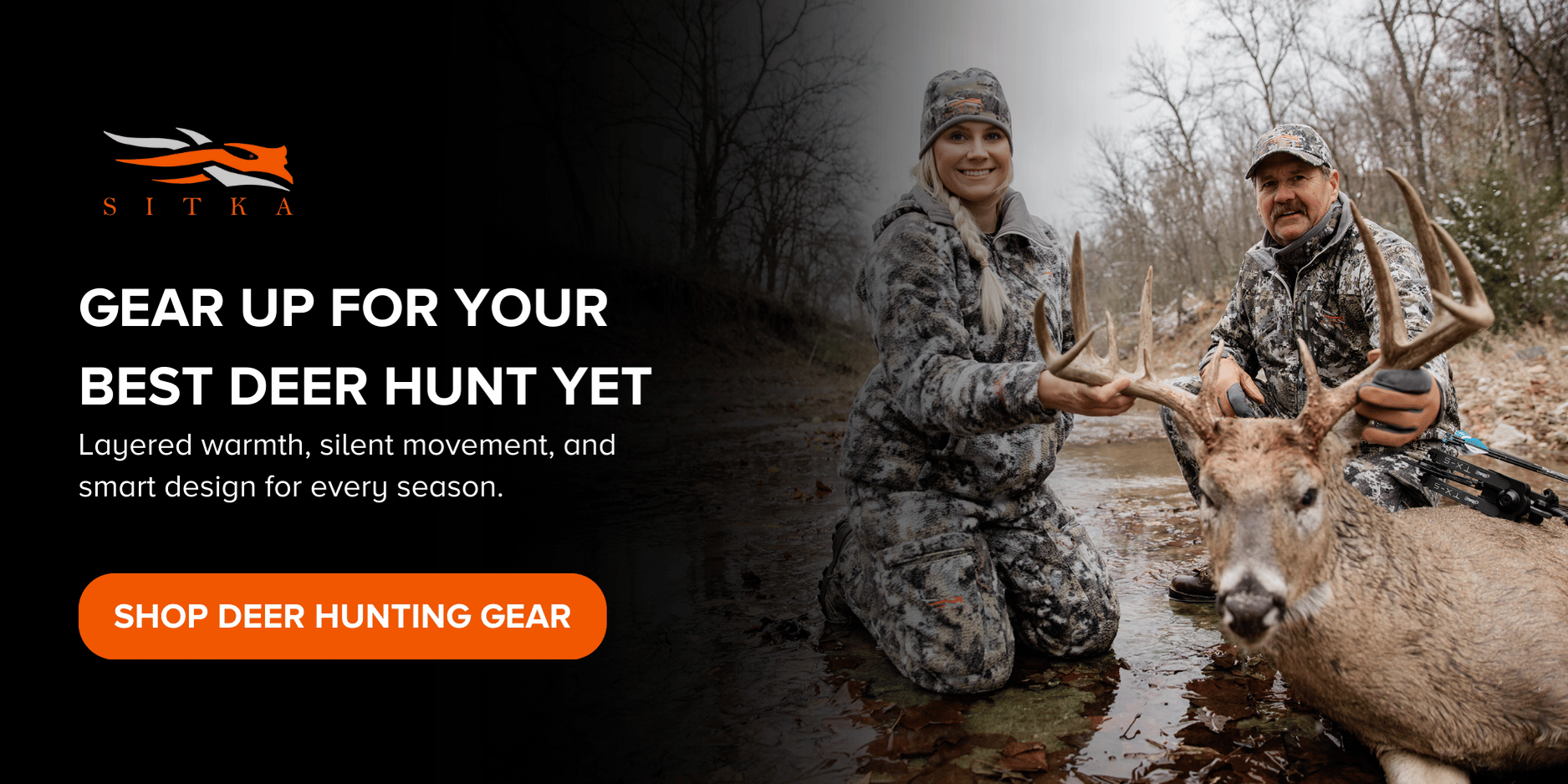Joe Fields | 7.31.2025
8 Whitetail Deer Hunting Tips: How to Hunt Deer
8 Whitetail Deer Hunting Tips: How to Hunt Deer
Throughout your journey as a whitetail hunter, you’re almost guaranteed to pick up countless deer hunting tips from fellow enthusiasts.
However, this advice may be inconsistent. While one hunter will swear by rattling horns for calling up big bucks, another will tell you to stock up on estrus—another will tell you that hunting the wind is the only way to get trophy deer to walk by your stand.
How do you cut through the noise and build a deer hunting approach that works? We’re here to do just that.
#1 Scouting: The Foundation of Success
Scouting is critical for whitetail hunting.
By spending time scouting, you can optimize your hunt time, choose spots where you’re most likely to see a deer, and set up your hunting gear in the preseason according to established movement patterns.
Key Features to Look for: Trails, Bedding, and Food Sources
As you scout your hunting area, keep an eye out for telltale signs of whitetail:
Trails – Keep an eye out for “breaks” in the vegetation where wildlife have trampled the plants.
Beds – Beds are typically in places with some protection from the elements: in thicker parts of forests or in ag field drains, for instance. Beds are round-ish areas where sleeping deer have flattened plants.
Food sources – Edges of ag fields, oak trees (which produce acorns), and man-made food plots (where hunters plant grasses, greens, and grains to attract deer) are all ideal food sources for whitetail.
Rubs and scrapes – Each year, bucks shed their racks and grow fresh antlers. As they itch and shed the “velvet” that protects their growing racks, deer will rub their antlers against trees and scrape them against the ground. These “rubs” and “scrapes” provide visual signs that bucks are afoot.
You can also look for all of these signs during the off-season and in the weeks leading up to opening weekend.
#2 Choosing the Right Stand or Blind
While hunting, you can sit in:
Elevated stands – Box stands, platforms, and tree stands are some of the most common elevated options. Elevation can make it easy to see over longer distances, but these stands can pose fall risks.
Ground blinds – Ground blinds are simple to set up and affordable. Since you’ll be at eye-level with the deer, you do need to wear proper hunting clothes and stay very quiet while in ground blinds.
No matter which one you choose, position your blind near deer travel routes, food sources, or other high-traffic areas.
Safety First: Using Lifelines and Harnesses
If you opt for an elevated stand, you must use a safety harness or lifeline. Formally called “fall arrest systems,” these devices can keep you from immediately hitting the ground or slow your fall if you slip out of your stand.
New hunters often underestimate the importance of fall arrest systems; seasoned hunters often overestimate their own dexterity. The fact remains that all hunters who use elevated stands are at risk of falling. One in three hunters who use elevated stands have fallen out of one.
Falls from elevated stands can be fatal. By correctly using a harness or lifeline, you can mitigate your risk and enjoy your hunt to the fullest.
#3 Mastering Scent Control
Deer have heightened senses of smell—especially during mating season. You can keep them from smelling you (i.e., detecting your presence) with various deer hunting scent control techniques.
Tips to Keep Yourself (and Your Clothes) Odor-Free
To minimize your scent profile during the hunt, use scent-free:
Laundry soap
Body soaps and shampoos
Deodorant
Consider buying scent-free products made specifically for hunters; sometimes conventional “unscented” products still have mild odors.
In addition, control scents in the off-season by storing your hunting clothes:
In a dedicated container or closet
With scent-free odor- and moisture-absorbing tools (like silica packets)
Without moth balls or dryer sheets
Wind Direction: How to Stay Undetected
Some hunters skip the scent-free products in favor of hunting the wind: purposely sitting downwind from where they expect deer to emerge.
To hunt the wind, you’ll need:
Multiple stand/blind options
Plenty of information about deer movement (to predict where they’ll emerge)
A weapon and ammo that are compatible with your expected shot range
If you only have a few stands to choose from, haven’t spent time scoping, or only want to take short-range shots, consider investing in scent control instead of hunting the wind.
#4 Strategic Use of Calls and Lures
While you can passively increase your chances of seeing a deer (by choosing the right stand location and controlling your scent), you can also actively increase your harvest odds by calling up deer.
Rattling Antlers, Grunt Tubes, and Doe Bleats: When and How to Use Them
Hunters have two main options when it comes to attracting deer with sound:
Rattling horns – Using composite “horns” or real antlers repurposed from past harvests, hunters can knock rack sections together to mimic the sounds of bucks fighting. The sound can draw the interest of big bucks in the surrounding area (who might drop by to break up the fight or steal the attention of nearby does).
Calls – Grunt tubes, doe bleats, and other audible calls can also draw the attention of deer who wouldn’t have otherwise walked by your stand.
Calling and rattling are most effective during peak mating season—when bucks are in a frenzy to find mates and fight off competition.
Using Doe Estrus for Maximum Effect
Doe estrus is urine collected from captive female deer during a heat cycle—and it stinks to high heaven. You can use it to both:
Mask your scent – Drip some estrus on the bottom of your shoes and at the base of your hunting pants before walking to the stand to overpower your scent.
Attract bucks – With a few sprinkles of estrus around your stand, you can broadcast a signal to nearby deer that does are ready and waiting.
#5 Understanding Whitetail Behavior Throughout the Seasons
Whitetail behavior changes as the season progresses—so your hunting approach should, too.
Early Season Hunting: Focus on Food Sources
In the early season (before the mating frenzy of the rut starts), deer have one goal: eating.
Finding and feeding from consistent food sources can:
Encourage consistent movement patterns
Help build body mass ahead of mating activities
Support rack-building during the spring and summer months
Plus, deer will continue to feed heavily during the rut. Establishing a food source in the early season (like a corn feeder) will keep deer coming to your ideal spot.
The Rut: Capitalizing on Peak Buck Activity
The peak of deer mating season is called “the rut.” When deer are “rutting,” they’re:
Maintaining the poundage they packed on before mating season
Moving around more than usual to find mates and food sources
More impulsive and less distracted by foreign sounds and smells
Bucks are especially active and competitive during the rut. They’ll move around more in daylight hours, extend their usual travel range, respond readily to calls, and tussle with fellow bucks.
Late Season Tactics: Recovery and Food-Focused Hunts
The rut isn’t your last chance to kill a whitetail. Cold weather and the discovery of new food sources can both motivate deer movement—especially as deer recover from highly active mating seasons.
If you’re struggling to see deer in the late season, wait for colder weather or try setting up a new feeder.
#6 Choosing the Right Gear for Whitetail Hunting
Building a collection of high-quality deer hunting gear is a must. Your clothes should be:
Layerable – Hunters layer clothes to stay comfortable and adaptable throughout the hunt.
Quiet – Instead of fabrics that “swish” as you move your arms or walk, opt for clothes that make as little friction noise as possible.
Durable – Hunting clothes have to endure the elements—unless you’re planning on sitting out every rainy, windy, or snowy day. Choose items that will withstand the weather and multiple seasons of hard wear.
SITKA Gear enhances mobility and stealth for hunters: our performance hunting gear is designed to stay quiet as you move, support your full range of motion, and offer superior camouflage. Not to mention durability—our gear is made by outdoorspeople for outdoorspeople.
#7 Weapons and Practice for Ethical Hunting
Choosing the right weapon is just as important as building your layering system—especially for whitetail.
Choosing the Right Weapon: Bows, Rifles, Shotguns, and Muzzleloaders
Whitetail hunters can typically choose between rifles, shotguns, bows, and muzzleloaders. Your choice should depend on:
Regulations – Your state may have specific seasons for archery, muzzleloading, modern firearms, or even primitive weapons (like flintlock arms).
Range – If you’re expecting to take 500+ yard shots in an ag field, choose a weapon, ammunition, and optics that are compatible with those needs—and your shooting abilities.
Stands – If you exclusively use tree stands and short distances make it awkward to use traditional rifles, you might opt to use bows or shotguns all season (if regulations allow).
Preferences – At the end of the day, you should choose a weapon that you can use proficiently, comfortably, and accurately.
Precision and Ethical Shots: Practicing and Learning Anatomy
To kill whitetail as humanely as possible, you’ll need to:
Learn anatomy – Head, heart, and lung shots offer the fastest, most painless kills for whitetail. But to hit these targets, you need to know where they are. Study deer anatomy closely to learn more about shot placement.
Practice – Once you have a clear picture of a deer’s most vital areas, practice shooting these areas with paper targets (for firearms) or foam targets (for bows).
#8 The Importance of Patience and Adaptability
You’ll need to pack your patience when deer hunting. But how long is too long to sit in the same stand?
Before packing up and walking to a new stand mid-hunt, assess your risks:
How likely are you to spook a deer on your way to your next spot?
How much time do you have left to hunt?
Do you have another stand option that’s compatible with your wind strategy and your weapon?
Generally speaking, the longer you stay in one spot, the better your chances of seeing (and shooting) a deer. This is especially true on mornings during the rut—while deer typically bed down during the day, they’ll move around more in daylight hours in search of mating and food opportunities. However, be sure to mind your state’s legal light regulations: Shooting in low light can increase your risks of maiming wildlife (or scoring a citation if you exceed legal light).
As your experience grows, so will your adaptability. You’ll learn how deer react to certain sounds, how long they’ll pause at a feeder, how they behave after a hit, and so much more. Be sure to know what colors deer can see, too. All this information will help you craft a strategy and respond to the environment in real-time during the hunt.
Why SITKA Gear Makes All the Difference
Whether you’re building your first whitetail hunting kit or replacing some worn-out favorites, turn to SITKA Gear. Our collection of hunting apparel features:
Advanced scent control technology – Our Merino wool hunting clothes leverage Merino’s natural odor-repellant properties to help hide your scent during the hunt.
Quiet fabrics – We use fabrics with specialized knits and blends that reduce friction noise—in other words, our hunting gear helps muffle the sounds of your movements.
Durable and weather-resistant materials – Our gear is built to last. Whether you’re shopping for weatherproof hunting jackets or base layers that will hold up season after season, our collections will withstand the elements and hold up to wear.
Simply put, SITKA Gear works—guaranteed. Explore our entire collection of whitetail hunting gear to discover the difference.
Sources:
Mississippi State University. What Do Deer Eat?.
Mayo Clinic. Be Smart About Tree Stand Use This Fall.
North American Whitetail. The Science Behind a Deer’s Sense of Smell & Scent Control.
Meateater. How to Use the Wind to Hunt Mature Bucks.


